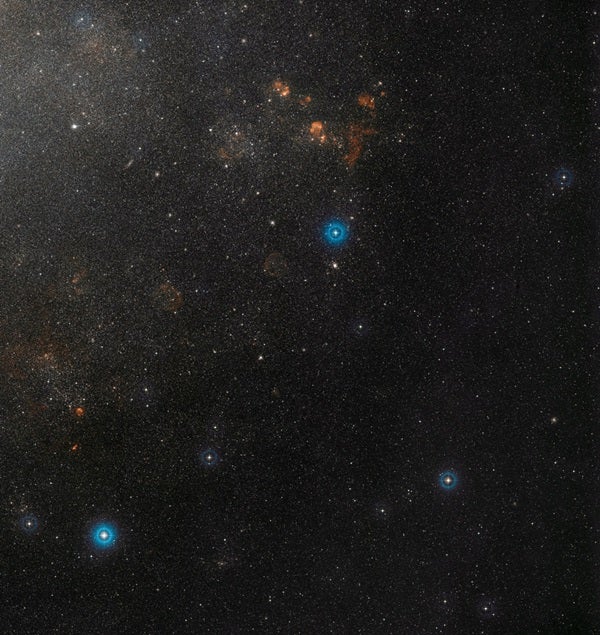As the two massive galaxies spiral toward each other, they might toss the Magellanic Clouds like a small piece of food thrown out of a blender. In this case, the Clouds would be lost to intergalactic space.
The Clouds may remain bound to Milkomeda, but even in that case they would move farther away from the center of the merger product. Making an exact prediction is difficult because we do not know the precise orbits of Andromeda and the Clouds, as they depend on the unknown mass distribution at the outskirts of the Milky Way and Andromeda. For example, the latest study (by Mark Reid of the Harvard-Smithsonian Center for Astrophysics in Cambridge, Massachusetts, and colleagues) found that the Milky Way has about twice as much mass as previously thought. A student of mine and I have written a paper that shows how this makes a significant change in the Clouds’ predicted orbit relative to the Milky Way (see above diagram). — Abraham Loeb, Harvard-Smithsonian Center for Astrophysics, Cambridge, Massachusetts










